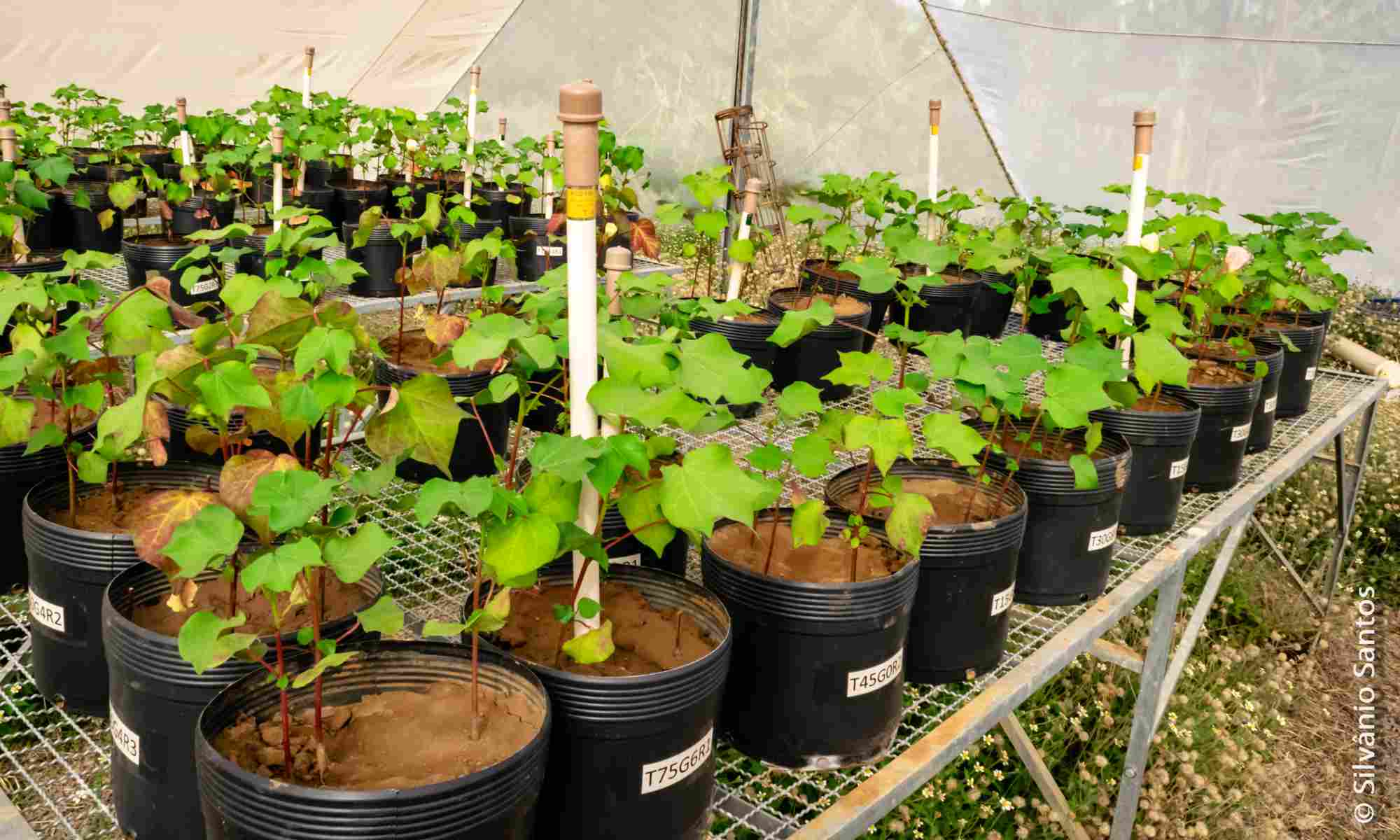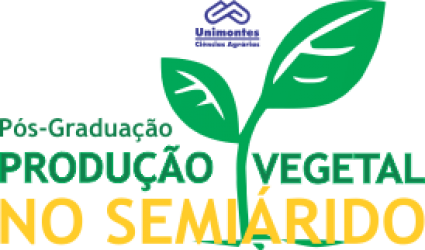- Version
- Download 20
- Tamanho do Arquivo 762.56 KB
- Data de Criação 14/06/2021
- Download
LOPES, Elisete Pedreira. Meios de cultura alternativos para rizobactérias e controle biológico de Meloidogyne javanica em olerícolas. 2019. 58 p. Tese (Doutorado em Produção Vegetal no Semiárido) – Universidade Estadual de Montes Claros, Janaúba, 2019.
Rizobactérias são microrganismos que promovem o crescimento de plantas e controlam fitopatógenos como nematoides fitoparasitas. Dentre os nematoides que podem ser controlados por tais antagonistas destaca-se o gênero Meloidogyne em função das perdas que induzem em diversas culturas com destaque para as olerícolas. Para estudos básicos e aplicados de rizobactérias é necessária sua multiplicação em meios de cultura que por sua vez são caros e oneram a pesquisa. Diante do exposto objetivou-se avaliar in vitro, meios de cultura com diferentes matérias primas vegetais, níveis de pH e fontes de açúcar na multiplicação de rizobactérias e a eficiência de formulação líquida de Bacillus subtilis, em arroz, no controle de Meloidogyne javanica e sobre o desenvolvimento de alface e tomateiro. Para a avaliação in vitro de meios de cultura com diferentes matérias primas vegetais e pH e diferentes matérias primas e fontes de açúcar foram montados ensaios individuais para Bacillus subtilis-34 e Paenibacillus lentimorbus-24. Os ensaios foram montados em delineamento inteiramente ao acaso com cinco repetições. Os ensaios foram arranjados em esquema fatorial 7x3+1 (sete matérias primas vegetais, 3 pH e tratamento adicional-meio de cultura tryptic soy agar -TSA) e 7x3+1 (sete matérias primas vegetais, 3 fontes de açúcar e tratamento adicional-meio de cultura TSA). Os resultados foram submetidos à análise de variância e as médias dos tratamentos foram comparadas pelo teste de Tukey a 5%. As médias dos tratamentos pareados foram comparadas pelo teste Dunnett a 5%. Na avaliação de meios líquidos foram avaliados caldos de arroz, de mandioca e o meio de cultura sintético tryptic soy broth (TSB) e testemunha. O ensaio foi montado em delineamento inteiramente ao acaso com 4 tratamentos e seis repetições. Os resultados foram submetidos à análise de variância e as médias dos tratamentos foram comparadas pelo teste de Tukey a 5%. Avaliou-se o tempo de vida de prateleira da formulação líquida de B. subtilis a base de arroz armazenada por 12 meses em condição ambiente e em refrigeração. Avaliou-se ainda, o efeito desta formulação na promoção de crescimento de alface e tomateiro e no controle de M. javanica. Para cada olerícola foi montado um experimento. Os dois experimentos foram conduzidos em casa de vegetação e montados em delineamento inteiramente casualizado contendo cinco tratamentos e oito repetições. Os tratamentos consistiram de: 1-rega da formulação da bactéria ao substrato nos tubetes aos oito e quinze dias, 2-aplicado via rega ao substrato dos tubetes aos oito e quinze dias e no vaso aos 25 e 35 dias, 3-rega da formulação ao solo dos vasos aos 25 e 35 dias após o transplantio e duas testemunhas; 4-Onix ® (Produto comercial a base de B. methylotrophicus – Isolado UFPEDA 20) e 5- testemunha absoluta- sem aplicação de bactéria e sem produto comercial. Em ambos os experimentos foram avaliados biomassa fresca e seca de parte aérea e crescimento de plantas e variáveis nematológicas: número de ovos, número de juvenis de segundo estágio, massa de ovos, número de galhas e fator de reprodução. Nos ensaios, in vitro, verificou-se que o meio de cultura, a base de mandioca com adição de dextrose, ajustado para pH 7 foi tão eficiente no crescimento de B. subtilis quanto o meio sintético TSA. P. lentimorbus-24 não se desenvolveu em nenhum meio de cultura quando o pH foi ajustado para 3 e 9. As combinações mais eficientes para esta bactéria em relação ao TSA foram meios de abóbora, arroz, arroz + feijão e banana no pH7. Das combinações entre meios de cultura e fontes de açúcar que diferiram do TSA, as mais eficientes foram arroz x açúcar cristal e arroz x dextrose. O meio de cultura líquido que promoveu maior número de unidades formadoras de colônias (UFC) de B. subtilis e P. lentimorbus foi o caldo de arroz. B. subtilis se manteve viável até os doze meses na formulação armazenada em geladeira e até os oito meses em condições ambiente do norte de Minas Gerais. Maior promoção de crescimento de alface e controle de M. javanica foi obtida pela aplicação da formulação líquida de B. subtilis duas vezes ao solo no vaso. A aplicação da formulação líquida de B. subtilis ao solo no vaso e no tubete + vaso reduziu a reprodução de M. javanica e promoveu maior desenvolvimento do tomateiro.
Palavras-chave: Rizobactéria, nematoide-das-galhas, formulação, controle biológico.
Alternative culture media for rhizobacteria and biological control of Meloidogyne javanica in vegetables
Rhizobacteria are bacteria capable of colonizing the root system of plants and by various mechanisms increase the development of plants and control plant pathogens like plant parasitic nematodes. Among the nematoids that can be controlled by such antagonists, Meloidogyne stands out due to the high losses induced in olive groves. For basic and applied studies of rhizobacteria as the production of new formulations aiming at their use as biological control products or biofertilizers, their multiplication in culture media is necessary, which in turn are expensive and influence the research. In view of the above, the objective was to evaluate, in vitro, culture media with different raw materials, pH and sugar sources in the development of Bacillus spp. and the efficiency of liquid formulation of Bacillus subtilis in rice on Meloidogyne javanica and on the development of lettuce and tomato. For the evaluation of different culture media and pH, two separate assays were set up for Bacillus subtilis-34 and Bacillus lentimorbus-24. The assays were mounted in factorial scheme 7x3 + 1 (7 culture media, 3 pH and additional treatment: TSA culture medium). For the evaluation of different culture media and sugar sources, two separate assays were set up for Bacillus subtilis-34 and Bacillus lentimorbus-24. The experiments were set up in a completely randomized design in a 7x3 + 1 factorial scheme (7 culture media, 3 sugar sources and additional treatment: TSA culture medium) and five replicates. The results were submitted to analysis of variance and the means of the treatments were compared by the Tukey test at 5%. The averages of the paired treatments were compared by the Dunnett test at 5%. In the evaluation of liquid media were evaluated rice, pumpkin, TSB and control (enriched water) broths. The assay was assembled in a completely randomized design with 4 treatments and six replicates. The results were submitted to analysis of variance and the means of the treatments were compared by the Tukey test at 5%. In the second part of the work the shelf life of the Bacillus subtilis liquid formulation in rice for 12 months and the development of lettuce and the control of Meloidogyne javanica by Bacillus subtilis were evaluated. Then the effect of the liquid formulation on the control of Meloidogyne javanica and on the development of tomato was evaluated. The two experiments were conducted in a greenhouse and assembled in a completely randomized design containing five treatments and eight replications. The treatments consisted of: irrigation of the formulation of the bacteria to the substrate in the tubes at eight and fifteen days, applied via irrigation to the substrate of the tubes at eight and fifteen days and in the vessel at 25 and 35 days, watering the formulation to the soil of the vessels at 25 and 35 days after transplanting and two controls; Onix ® (commercial product based on B. methylotrophicus - Isolated UFPEDA 20) and absolute control - without application of bacteria and without commercial product. In both experiments, fresh and dry shoot biomass and plant growth were evaluated, besides the nematological variables such as: number of eggs, number of juveniles of second stage, egg mass, number of galls and reproduction factor. In the in vitro assays, the cassava-based culture medium with the addition of dextrose adjusted to pH 7 was found to be as efficient in growth of Bacillus subtilisas the synthetic medium TSA. Bacillus lentimorbus-24 did not grow in any culture medium when pH was adjusted to 3 and 9. The most efficient combinations for this bacterium with respect to TSA were pumpkin, rice, rice + bean and banana media at pH7. From the combinations of culture media and sugar sources that differed from TSA, the most efficient were rice x crystal sugar and rice x dextrose. The liquid culture medium that promoted the highest number of colony forming units (CFU) of Bacillus subtilis and Bacillus lentimorbus was the rice broth. Bacillus subtilis remains viable up to the months twelve in the formulation stored in refrigerator and up to eight months in environment in the North of Minas Gerais. The greater promotion of lettuce growth and control of Meloidogyne javanica was obtained by applying the liquid formulation of Bacillus subtilis twice to the soil in the pot. The application of the liquid formulation of Bacillus subtilis to the soil in the pot and the pot + vessel reduced the reproduction of Meloidogyne javanica and promoted greater development of the tomato.
Keywords: Rhizobacteria, root-knot nematode, formulation, biological control

